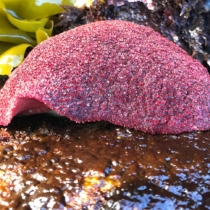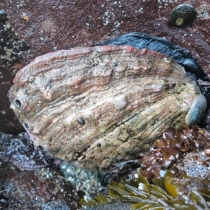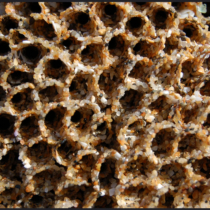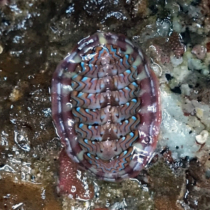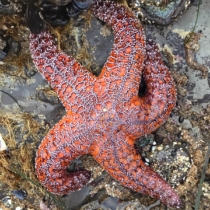Tag Archives: California
Oil? Spills? and Crabs? Oh my!

How did the 2007 oil spill in the San Francisco bay affect the population of sand crabs in the area? This question is important because sand crabs are significant to beach ecosystems; they are food for many animals, and they are also an indicator species. This means that scientists and researchers can look at sand crabs to determine the health and sustainability of beaches and other marine ecosystems. More
Itch for Crabs? (Not those crabs!)
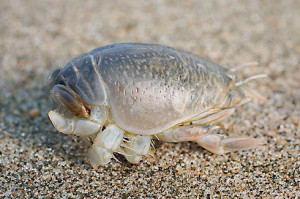 by Brian, Somari, and Charles
by Brian, Somari, and Charles
Bishop O’Dowd High School
Have you ever looked down while at the beach, and seen tiny creatures rolling around, and live in the sand? These tiny creatures are called sand crabs and they are quite paramount to their ecosystem. You may be wondering why sand crabs are so important and it is because they are prey for many animals such as shorebirds and fish. As a species, they can determine whether or not the ecosystem will be healthy. sand crabs make up 80-90% of the intertidal invertebrate biomass. Males and females vary in sizes but the females tend to be larger.
More
Little Crabs in a Big Storm
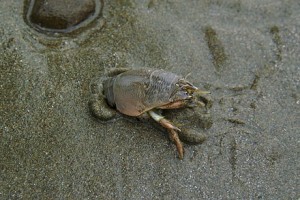 by Julia, Olivia, and Thomas
by Julia, Olivia, and Thomas
Bishop O’Dowd High School
Emerita analoga, or the common Pacific sand crab, is an small animal with a colossal impact on beach ecosystems. We will examine the population trend in sand crabs over time at ocean beach, and examine
possible environmental factors that could have caused this, specifically El Nino. The sand crab is an indicator species, so examining the health of their population will allow us to examine the health of the sandy beach ecosystem as a whole.
Sand Crabs? That’s so Raven.

Julian, Lucas, and Lily
Bishop O’Dowd High School
Sand crabs are herbivores and an important food source for other beach organisms, specifically shorebirds. We assumed that if the sand crab population is thriving on a beach, then the shorebird population should be doing well too. We looked at data of sand crabs and shorebirds along the north-central California coast over the course of a year. Our original hypothesis was that if the population of sand crabs was high, then naturally the population of shorebirds would also be high. But, contrary to our hypothesis, a flourishing sand crab population means there are less shorebirds… More
Finding Meaningful and Lasting Connections with Our Local Marine Ecosystem
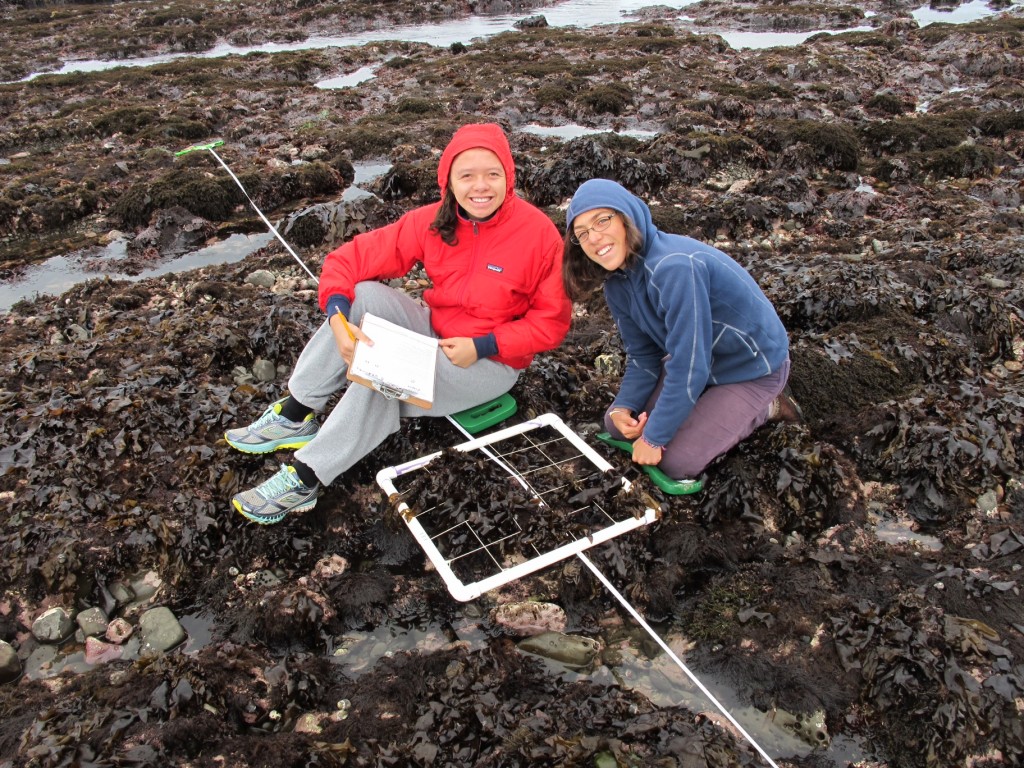
Author: Melea of the Branson School
The wind tickled our noses as we scaled down the steep trail to Duxbury Reef in Bolinas, CA for a monitoring of the rocky intertidal. Thrice a year, our Sustainable Seas club, which participates in the LiMPETS program, monitors Duxbury Reef, which we have adopted as our monitoring site since 2000. Peers from the Branson School enthusiastically shared anecdotes of past monitorings, marveling at the striking stripes of Anthopleura sola, also known as sunburst anemones, colorful, alien-looking nudibranchs, or stunning magenta sunsets they had witnessed. Scarcely anyone was on their phones (a rare occurrence for teenagers), and people seemed almost giddy to be outside and immersed in the cool, salty ocean air.
our monitoring site since 2000. Peers from the Branson School enthusiastically shared anecdotes of past monitorings, marveling at the striking stripes of Anthopleura sola, also known as sunburst anemones, colorful, alien-looking nudibranchs, or stunning magenta sunsets they had witnessed. Scarcely anyone was on their phones (a rare occurrence for teenagers), and people seemed almost giddy to be outside and immersed in the cool, salty ocean air.
Sticky Situation: How did the Cosco Busan Oil Spill Affect Sand Crabs?

Authors: April, Tess & Emily
 In November of 2007, the container ship, Cosco Busan collided with a Bay Bridge support tower. The ship was fatally wounded, oozing 53,569 gallons of oil into the San Francisco Bay. The aftermath of this incident may have accounted for a steep drop in the sand crab population on San Francisco’s Ocean Beach in the years to follow. The oil spill may have affected the number of surviving recruits, or young sand crabs, especially since the mating season for sand crabs occurs in spring and summer, thereby affecting the number of recruits in 2008.
In November of 2007, the container ship, Cosco Busan collided with a Bay Bridge support tower. The ship was fatally wounded, oozing 53,569 gallons of oil into the San Francisco Bay. The aftermath of this incident may have accounted for a steep drop in the sand crab population on San Francisco’s Ocean Beach in the years to follow. The oil spill may have affected the number of surviving recruits, or young sand crabs, especially since the mating season for sand crabs occurs in spring and summer, thereby affecting the number of recruits in 2008.
Our Marine Biology class participated in the LiMPETS sandy beach monitoring program on September 20th, 2014 at Ocean Beach. To survey the sand crabs living on the beach, we took 50 random samples of sand from the swash zone, or the zone of wave action. In each of these 50 samples, we observed any sand crabs that were found. We recorded their gender and assessed whether they were a recruit (young crab) or adult.
Does Upwelling Really Raise Populations of Marine life?
Authors: Francesca & Jordan
There are four seasons that we all know and love; summer, a time for swimming and tanning; fall, a beautiful season with pumpkin flavored everything; winter, the time to ski; and spring, when the winter thaws. However, many of us may not be familiar with the seasons of the ocean. These three ocean seasons are known as winter storms, upwelling, and relaxation. These seasons affect the ocean’s inhabitants much like ours affect us. One of the smaller residents of the sea that seem to be affected by these seasons is the sand crab (Emerita analoga).
Could Climbing Climate Cause a Copious Amount of Sand Crabs?

 Authors: Gabrielle, George & Viviana
Authors: Gabrielle, George & Viviana
The California coast has well established populations of sand crabs. However, sand crab populations in Oregon occur only occasionally, and seem to be replenished by those along the California coast. The Davidson current, which runs along the western coast of the United States, carries crabs from California up to Oregon. These populations thrive during a strong El Niño period, which is a period characterized by unusually warm water in the tropical Pacific and decreased upwelling along the coast of California in the summer months. Increases in water temperatures caused by El Niño have led to shifts in the distribution of many marine species northward along the California and Oregon coastlines.
Small Things Can Make Big Impacts

Authors: Simone & Andrea
In general, human activities can positively and negatively influence the environment in which organisms inhabit. Every organism on this earth plays an important role in maintaining the balance of life no matter the size. Scientists may research the study of life on a small scale in order for us to better understand how small organisms can influence the environment in big ways. If in a community a small factor is harmed there might be consequences for those who heavily depend on it.
Our marine biology class participated in the LiMPETS sandy beach monitoring program on September 20th, 2014 at Ocean Beach located in San Francisco. We took 50 cores from the beach and recorded how many sand crabs were found per core. We did this so we could analyze and compare the sand crab population in the 11 years that data were collected. This is necessary in order to have a complete picture of any changes in the population.





